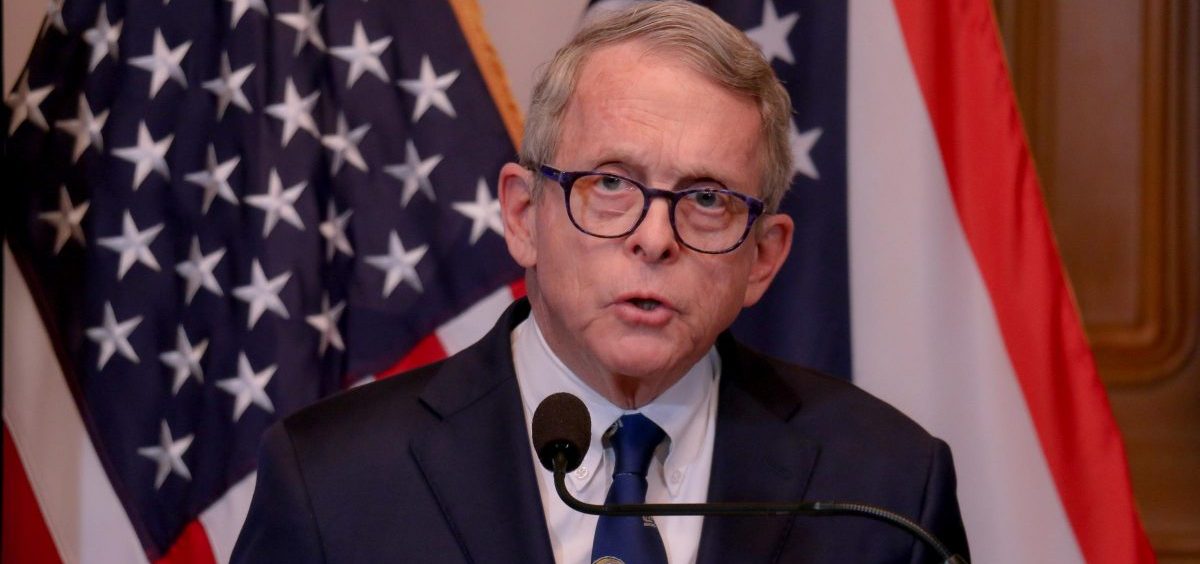News

DeWine Lifting “Stay Safe Ohio” Order
By: Gabe Rosenberg | WOSU
Posted on:
COLUMBUS, Ohio (WOSU) — Ohio’s stay-at-home order is now less a command than a suggestion.
Gov. Mike DeWine announced on Tuesday that he is issuing an “urgent health advisory” to take the place of Ohio’s restrictions, as the state pushes forward in reopening the economy.
“We are now moving from orders to strong recommendations,” DeWine said at his daily coronavirus press conference.
Ohio’s stay-at-home order has undergone several extensions and revisions since first being issued on March 22. The current restrictions were scheduled to lapse on May 29.
The original order stated Ohioans must “stay at home or at their place of residence,” but contained exceptions for things like going to work, going to the grocery store or pharmacies, checking on relatives, attending funerals and weddings, and walking in parks. Violating the law carried the potential of a second-degree misdemeanor, although DeWine said criminal penalties were rarely pursued.
Now, the health advisory will ask but not require Ohioans to “stay at their place of residence when possible.”
Non-essential and out-of-state travel will be allowed, although still discouraged. Ohioans returning from out-of-state will no longer be required to self-quarantine for 14 days, unless they have a fever or otherwise show symptoms.
People who have tested positive or presumptively diagnosed with COVID-19 will remain barred from entering Ohio, unless they’re doing so under medical orders.
“It makes sense to move away from that provision and begin to resume more of the normal things they would do, with the constant reminder that coronavirus can be a threat in your lives and the lives of your loved ones, so please take precautions,” said Lt. Gov. Jon Husted.
Under the advisory, many recommendations remain the same before: six feet of social distancing, a limit on crowds, and emphasizing hand washing and other sanitation efforts. The new advisory also encompasses previously-issued guidelines for reopening businesses, which are still enforceable by local authorities.
Ohio will also keep its ban on mass gatherings of more than 10 people, other than existing exceptions of First Amendment expressions like protests and places of worship.
“In the end, no order and no law will be as successful as a well-informed public that simply cares and respects each other,” Husted said.
DeWine also strongly urges that most vulnerable Ohioans – including people over 65 and those with pre-existing medical conditions – should stay at home as much as possible. Those groups should continue avoiding crowds, wear a mask in public and practice social distancing.
For the rest of the state, DeWine is asking Ohioans to take protective actions – on behalf of other residents as well as themselves. He said the next phase of Ohio’s response comes down to “learning to live with the virus.”
“Those Ohioans not considered at high risk can certainly carry the virus,” DeWine added. “They can spread the disease even when they’re not showing symptoms.”
The Ohio Department of Health reported Tuesday that 28,952 cases of COVID-19 have been confirmed in the state, and 63 more people have died, for a total of 1,720. Hospitalizations have reached 5,117, with 1,357 people admitted to the ICU.
DeWine said Tuesday that COVID-19 is now one of the leading causes of death in Ohio. As of May 19, more than 91,000 people in the U.S. have died from the disease.
The governor acknowledged that Ohio saw a spike of new cases, deaths and hospitalizations in the last 24 hours, but the curve over the last three weeks has remained “fairly flat.” He also noted the state’s R0 number – representing new infections estimated to be caused by a single person – has dropped in half to 1.
The Ohio Department of Veterans Services reported Tuesday that a veteran at a state nursing facility has died from COVID-19. After directing the department to test all residents at the state’s two veterans homes, DeWine says that 28 residents and five staff members tested positive at the Sandusky facility. No cases have been confirmed at the Georgetown facility, while 818 residents and staff tested negative across both homes.
DeWine also said a fourth staff member of the Ohio Department of Rehabilitation and Correction has died from COVID-19.
Dr. Amy Acton, director of the Ohio Department of Health, did not attend Tuesday’s briefing. DeWine said Acton was not feeling well.

